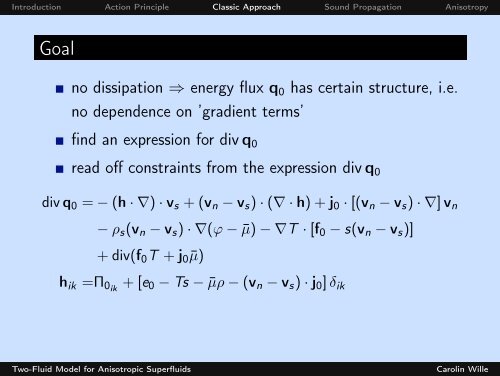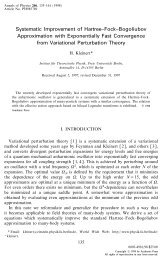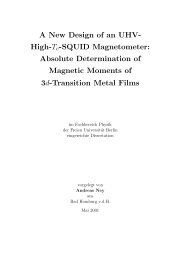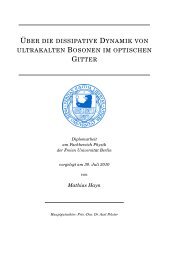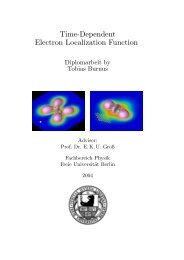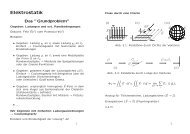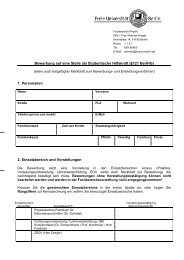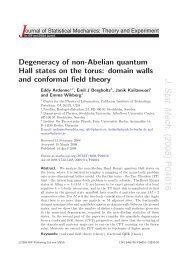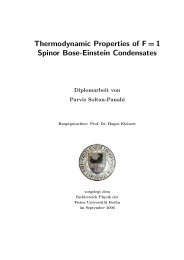Two-Fluid Model for Anisotropic Superfluids
Two-Fluid Model for Anisotropic Superfluids
Two-Fluid Model for Anisotropic Superfluids
You also want an ePaper? Increase the reach of your titles
YUMPU automatically turns print PDFs into web optimized ePapers that Google loves.
Introduction Action Principle Classic Approach Sound Propagation Anisotropy<br />
Goal<br />
no dissipation ⇒ energy flux q 0 has certain structure, i.e.<br />
no dependence on ’gradient terms’<br />
find an expression <strong>for</strong> div q 0<br />
read off constraints from the expression div q 0<br />
div q 0 = − (h · ∇) · v s + (v n − v s ) · (∇ · h) + j 0 · [(v n − v s ) · ∇] v n<br />
− ρ s (v n − v s ) · ∇(ϕ − ¯µ) − ∇T · [f 0 − s(v n − v s )]<br />
+ div(f 0 T + j 0¯µ)<br />
h ik =Π 0ik + [e 0 − Ts − ¯µρ − (v n − v s ) · j 0 ] δ ik<br />
<strong>Two</strong>-<strong>Fluid</strong> <strong>Model</strong> <strong>for</strong> <strong>Anisotropic</strong> <strong>Superfluids</strong><br />
Carolin Wille


